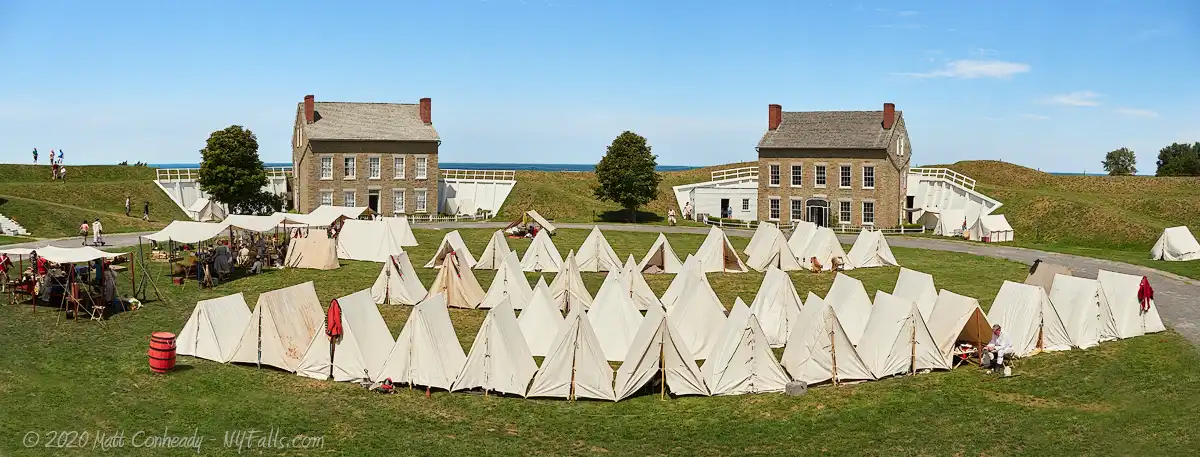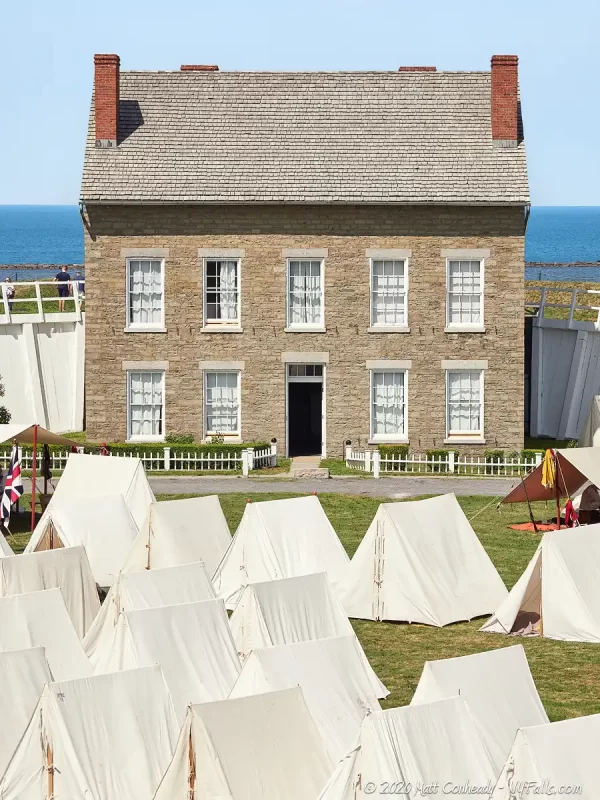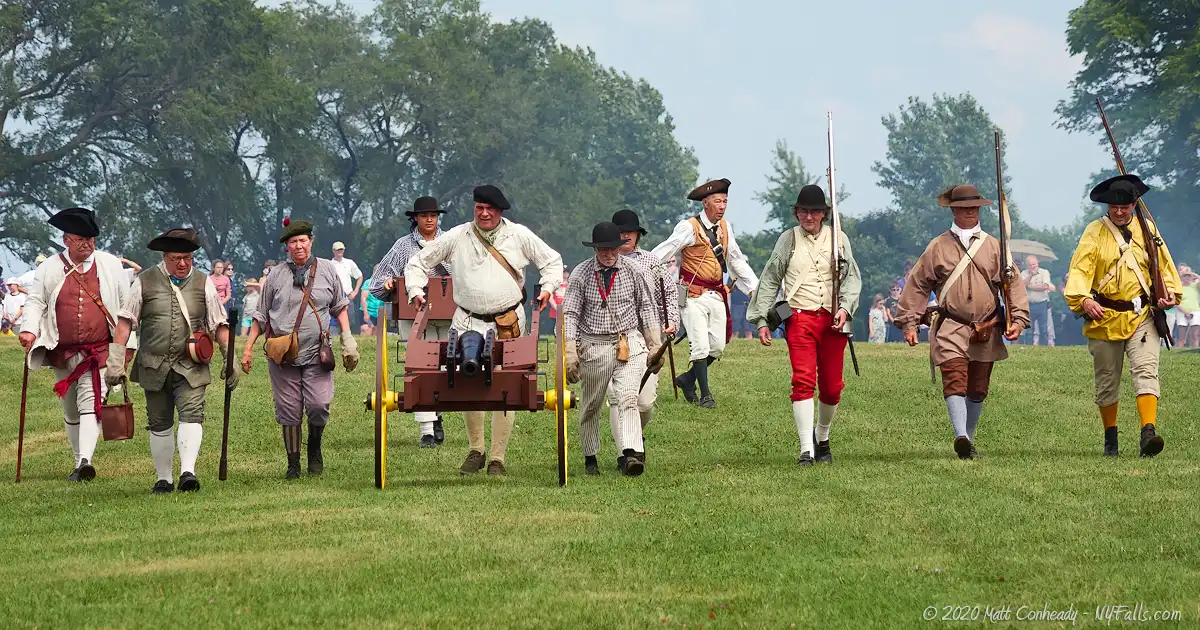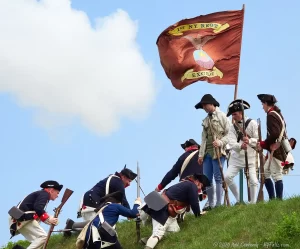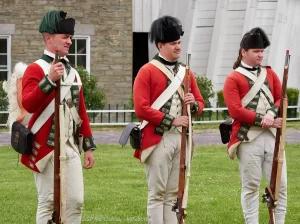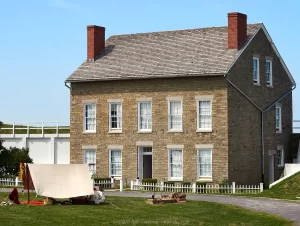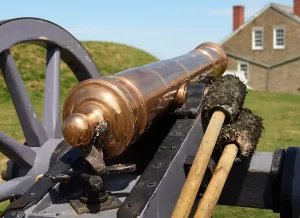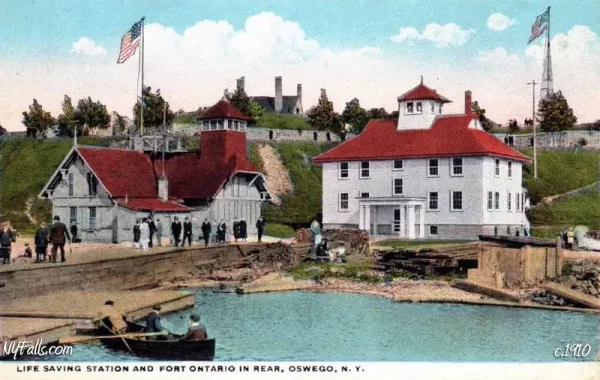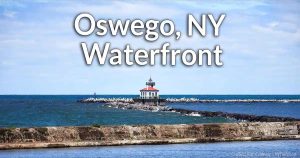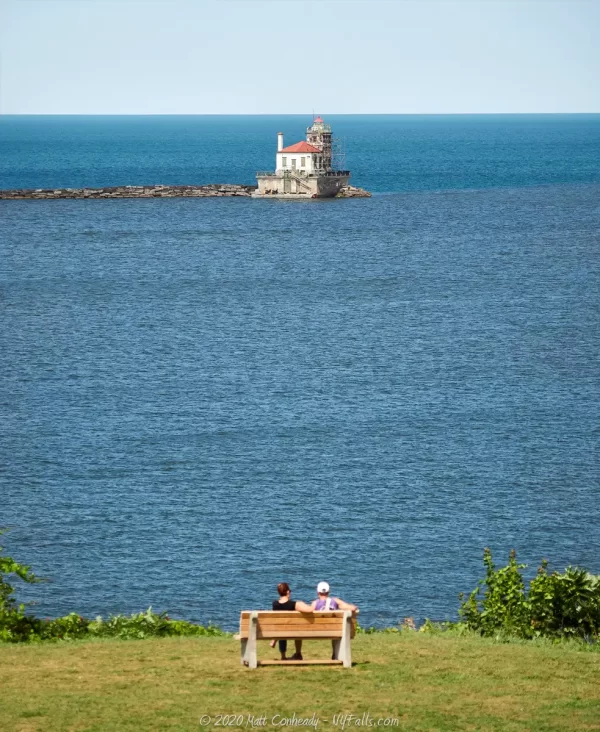Fort Ontario State Historic Site & Park
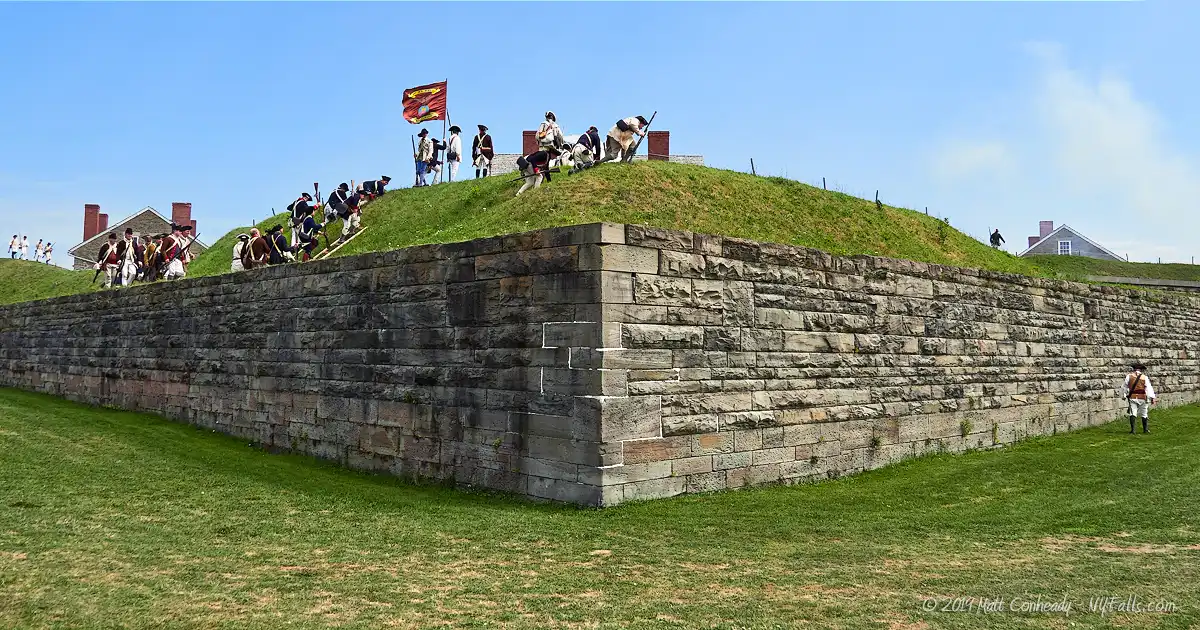
Location: On Lake Ontario; within the city of Oswego; Oswego County; New York
Maps: Google Map; Topographic; Interactive map
GPS Coordinates:
- Parking: N 43.46384 / W 76.50663
- Fort Entrance: N 43.46538 / W 76.50847
- Lakeshore access: N 43.46859 / W 76.50675
Directions: From NY-104/Ridge Rd, head through the city and head north on East 4th Street. That will lead you right to the park.
From I90, take exit 39 onto NY-690 N. Continue as it becomes NY-48 N and continue 10 miles into Fulton. Make a right onto W Broadway (CR-3) and after 1/3 of a mile turn left onto S 2nd Street. Continue for 10 miles on S 2nd Street as it becomes NY-48 into the city of Oswego. Make a right on E. Bridge Street and then a left on East 4th Street. East 4th Street takes you into the park. Or use Google Maps.
Parking: There are several lots within the park, including a large one near the park entrance. A second parking lot further up the park road to the north is about the same length walk to the fort. When there are events, these lots fill up quickly, but additional nearby lots are opened at that time.
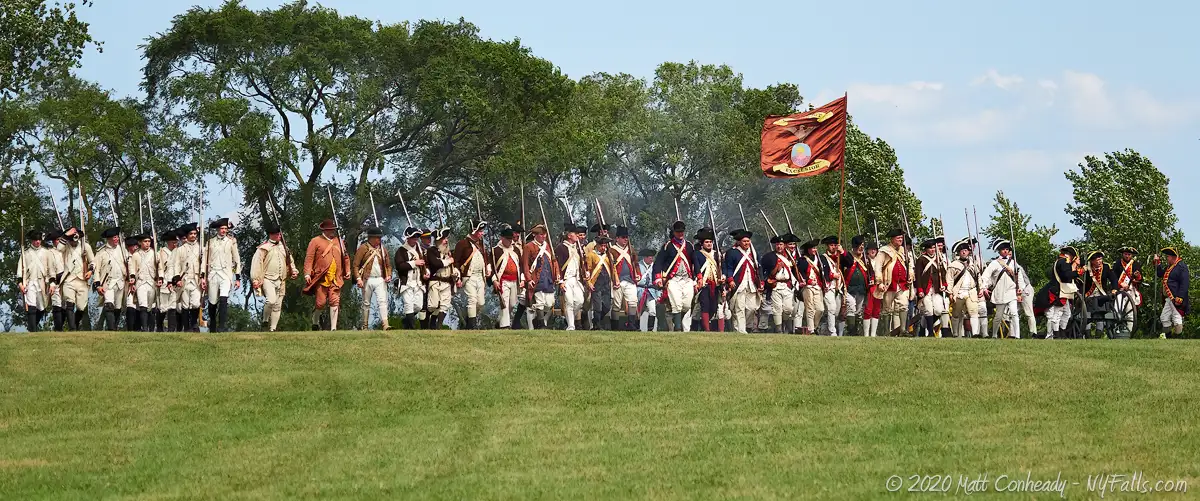
Weather
Information / Accessibility / Accommodations
Typical Seasons/Hours: The park surrounding the fort is open daily. The fort is seasonal.
Typical hours are:
Late May through June: Wednesdays – Saturday, 10 am – 4:30 pm
Sundays, 12 pm to 4:30 pm (Closed Monday & Tuesday)
July into Sept: Mondays – Saturdays, 10 am – 4:30 pm
Sundays, 12 pm – 4:30 pm
September into October: Wednesdays – Saturdays, 10 am – 4:30 pm
Sundays, 12 pm – 4:30 pm (Closed Monday & Tuesday)
Check here for a more detailed schedule.
Admission: The park surrounding the fort is free.
The Fort’s admission is as follows:
$4 Adults
$3 Seniors/Students
Children 12 and under Free
Group discounts are available
Best time to visit: Summer days, especially during events at the fort.
Time: 5 minutes.
Handicap accessibility: None.
Pets: Allowed if on a leash. For your pet’s safety, and the safety of other hikers, keep your pet on the leash! It doesn’t matter if your dog is “friendly,” it’s the law. Please clean up after.
Swimming: Not allowed.
Boat launch: None.
Accommodations: The Bay Side Pub across the street has food, drink, and restrooms.
Description
Located on the east side of the Oswego River and overlooking Lake Ontario, Fort Ontario is a small, but beautiful historic site with a rich, multinational military history dating back to the 18th century. It played a role in major American conflicts from the French and Indian War through WWII. Today it is on the National Register of Historic Places, is owned by the state of New York, and run as a public state historic site. The fort today contains two Officer Quarters, the Powder Magazine, the Enlisted Men’s Barracks, a Storehouse, as well as two guardhouses by the entrance of the tunnel to the main entrance. A former parade grounds to the southeast now contains baseball diamonds and picnic facilities. Just south of these are two brick barracks that were constructed to house battalions leading up to WWI.
Buildings in the fort have been refurbished and many rooms stocked with colonial-era furnishings and supplies. Throughout the year, the historic site hosts demonstrations and major events, including battle reenactments. It offers fantastic views of Lake Ontario from the rampart walls, as well as limited access to the shoreline (from the northeast corner of the park). While I can’t say the fort offers enough to fill a full day, especially if there’s no specific event happening, and it pales in comparison to Fort Niagara, if you happen to be in the area, it is definitely worth a stop.
History
As a major trading post and colonial port throughout early American history, Oswego’s handful of forts played a major role in early power struggles, and then with the infrastructure in place, a critical role for the quality of life for American soldiers and Jewish refugees later on. Today it is a small, but powerful symbol of American resistance, power, and compassion. An effort started in 2018 to consider turning the site into a National Park, largely in part to its long history and role in the World War effort.
Here are some random historic pictures I was able to find, and below is a timeline to give an overview of the history of the fort.
| 1,000 BC-ish | – | The earliest evidence of inhabitants in the region. |
| 1615 | – | Samuel de Champlain arrives in the region. |
| 1722 | – | The British and Dutch establish a settlement in Oswego and begin trading fur with Native American tribes. |
| 1727 | – | Fort Oswego is established by the British on the west side of the Oswego River. |
| 1741-3 | – | Fort Ontario is further fortified. |
| 1754 | – | The French and Indian War begins |
| 1755 | – | The British establish Fort Ontario and Fort George in Oswego. |
| August 1756 | – | French and Native American forces under the command of the Marquis de Montcalm capture and destroy all three British forts in Oswego. This is referred to as the Battle of Fort Oswego (1756). |
| 1763 | – | The French and Indian War ends. |
| 1775 | – | The Revolutionary War begins |
| 1776-1777 | – | The St. Leger wing of British campaign to divide New York launches from Fort Ontario. It fails and the British abandoned Fort Ontario in 1777. |
| July 1778 | – | American troops from Fort Stanwix burn the abandoned fort to the ground. |
| 1782 | – | The British reoccupy and rebuild the fort. |
| 1783 | – | The Revolutionary War ends. |
| February 1796 | – | Under the Jay Treaty, the British surrender the fort to the United States. |
| 1812 | – | The War of 1812 begins. |
| May 1814 | – | The British, under the command of Commodore Sir James Lucas Yeo, capture the fort. The original plan was to attach the town as a whole, but at the last moment the decision was made to attack the under-defended fort. Defenders fled. This is referred to as the Battle of Fort Oswego (1814) |
| 1815 | – | The War of 1812 ends, control of the fort returns to the United States. |
| 1838-1842 | – | Fearing another invasion by the British from the north, the US rebuilds and upgrades the fort, garrisoning troops there. It was rebuilt with timber and earth. |
| 1861 | – | The Civil War begins. |
| 1863-1870s | – | Fearing British involvement in the Civil War, the US rebuilds and fortifies it again, building the modern brick structures within the walls that exist today. |
| 1865 | – | The Civil War ends. |
| 1901 | – | The US left the fort abandoned. |
| 1903-1905 | – | With the old fort abandoned, the US improves the land surrounding the fort, including constructing a row of duplex officers’ quarters along the southeast and a pair of brick listed barracks to the south. |
| 1928 | – | The buildings in the old fort were used for housing and recreation for the military. |
| 1950s | – | The Fort houses engineers and workers from various NIKE missile bases in the region. |
| 1941 | – | WWII begins. About 141 buildings stood at the grounds, all in use. |
| 1944-1946 | – | The fort serves as refugee housing for Holocaust victims. |
| 1945 | – | WWII ends |
| January 1946 | – | The refugees are granted citizenship. Some start homes and businesses in local Oswego. |
| 1946 | – | The fort is deactivated and abandoned. Ownership is transferred to the State of New York. Some buildings on the grounds (outside of the fort) continued to serve as veteran housing and reserve training. |
| 1949 | – | New York State starts to transform the fort into an historical site. Restoration begins. |
| September 2018 | – | The Fort Ontario Study Act passes the US Senate, calling for a study into the site becoming a US National Park. |
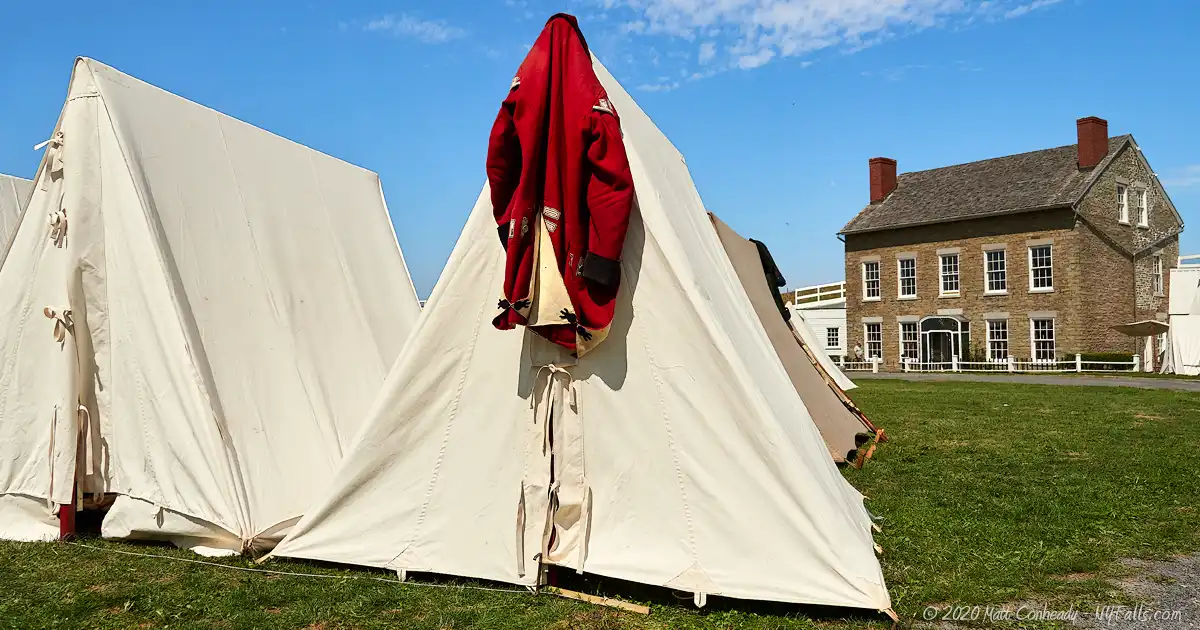
Hiking / Walking Trails
Difficulty: Moderate. While the majority of the park and historic site pathways are on level ground, there are some inclines within the fort to ascend the walls and there are steps within the structures.
Accessibility: The fort buildings and batteries are not accessible and have stairs. The pathway within the fort is dirt/gravel. The park roads are paved and lead to most facilities around the park, including the fort, and a paved (although in rough shape) pathway parallels the park road.
Distance: Just over a mile to see it all.
Markings: Within the fort there are paved walkways encircling the interior of the fort and leading from one building to the next. Some poorly-marked grass ramps lead up the wall. At some points the fort walls will have doors that allow access to the bunkers below.
Description: From the parking area, head north towards the fort and enter through the gate, paying admission at the gatehouse and grabbing any paper materials they have on hand.
Start by going in a counter clockwise direction around the inside of the fort. It’s difficult to get lost. Enter any buildings and be sure to check second and third floors, if they are open. Check behind buildings for doors leading down into the walls.
Once all the buildings are explored, head back to the extreme east or west ends and look for a grass ramp that leads up the walls. Because some of the walls have collapsed, you can’t completely encircle the fort on the walls and need to descend on the opposite end.
Exit the fort, turn right and head across the grass toward the lake. Walk around the exterior walls and, keeping Lake Ontario to your left, walk until you come across the road and a paved pathway that leads to a parking lot by the lake. Just beyond that parking lot is the old Post Cemetery.
Follow that path (that parallels the park road) south and it will pass ballfields as well as some modern military structures and loop around back to the parking lot.
Maps: See the interactive map below.
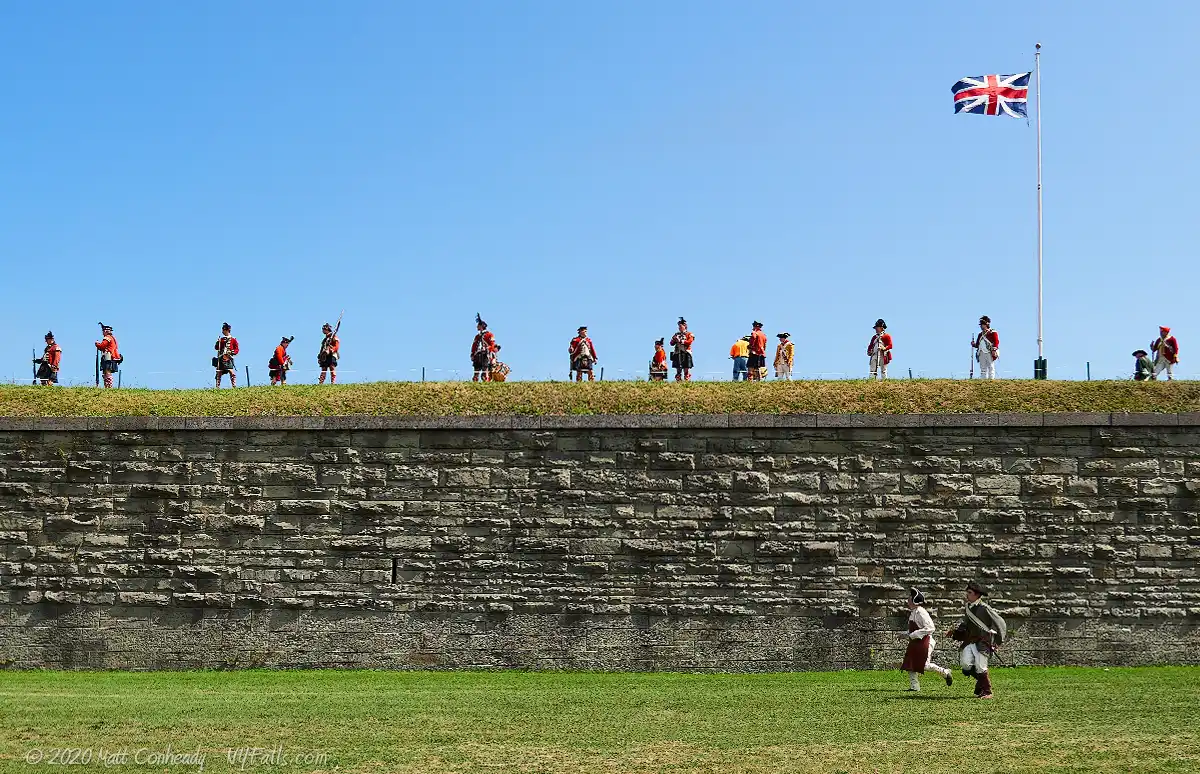
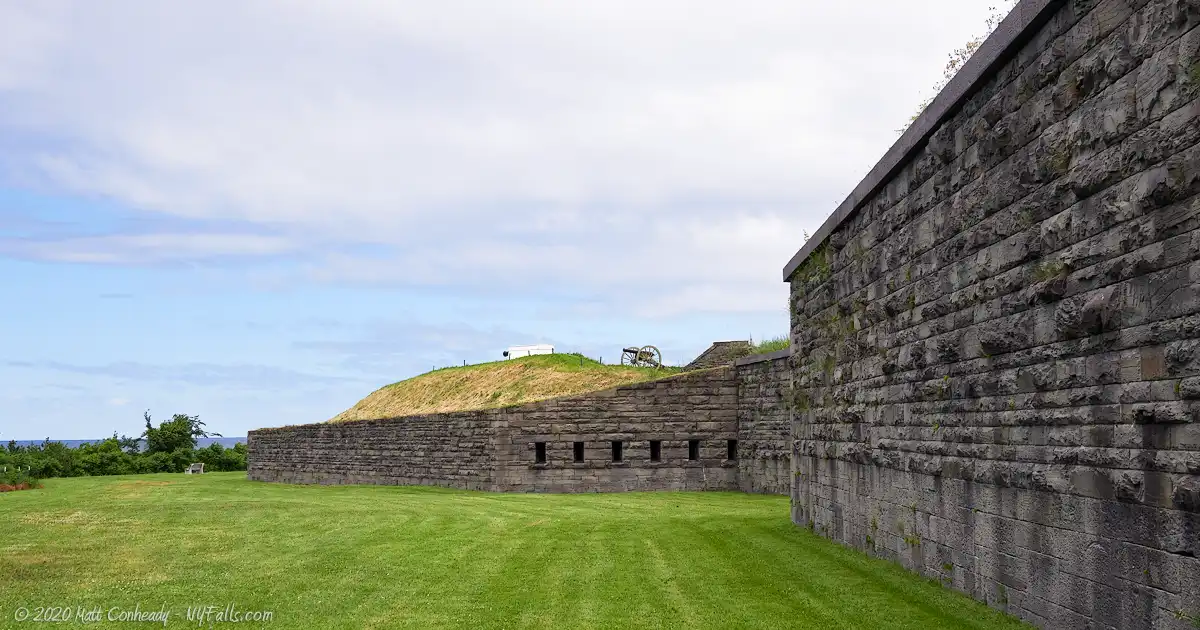
Fort Ontario Interactive Map
Fishing
There are no accessible fishing locations. While you can view the lake from the neighboring park, a rail line separates the park from the lake and going down past the tracks to the beach is not allowed. Fish at Breitbeck Park.
Interesting Stuff
Haunted History Tours
Every mid-October there is a Haunted History Tour of the Fort. Running over an hour, the tour walks the grounds at night and there are some eerie sights and jump scares. Children are not allowed. More information can be found here.
Oswego West Pierhead Lighthouse
This beautiful navigation beacon was constructed in 1934 replacing the original light that stood there since 1889. The attached duplex lightkeeper’s station was constructed in 1936. The Coast Guard was stationed there up until 1968 when the light was converted to electricity. It was again modernized with a new light and solar power in 1995. The city of Oswego obtained ownership of the lighthouse in 2009 and began restoration efforts in 2012. Restoration of the interior and exterior began in 2015 and we saw scaffolding still there when we visited in 2018. It is occasionally open for tours.
Fort Oswego
Established by the British in 1727 as a trading post, as tensions grew with the French, the British garrisoned thousands of soldiers and built a stone wall around it in the 1740s. French and Native American forces invaded in 1756 (Battle of Fort Oswego) and the fort was destroyed. Today, a plaque commemorating the fort exists at the corner of 1st West St and Lakes St on the west side of the Oswego River.
Fort George and Montcalm Park
Fort Gorge was built in 1755 to support Fort Oswego and was destroyed by French forces the following year. A commemorative plaque can be found in Montcalm Park, which is a beautiful early 20th-century urban park in the city’s historic district.
 Beribeck Park
Beribeck Park
A beautiful lakeside park on the west side of the Oswego River offers breathtaking views of Lake Ontario (especially sunsets) and is close to several shops and eateries are within walking distance. It’s also the site of the annual Harborfest (late July).
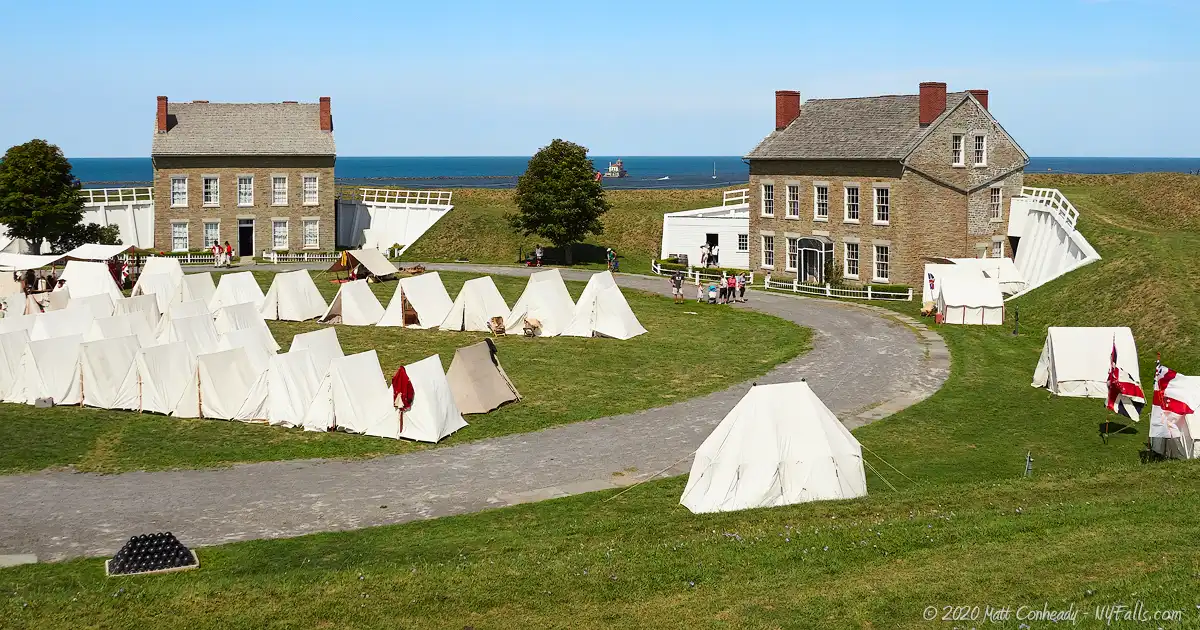
Photography Tips
Sunsets
- The angle of the shore (towards the west) gives this park a nice vantage point for Lake Ontario sunsets.
The Lighthouse
- From the rampart you can get a clear view of the lighthouse northwest of the fort.
Events
- The best time to photograph is during events when costumed volunteers reenact everything from battles to daily life.
- The crowd packs the place, so get there early.
More tips
- See the Articles and Message Board sections for more photography tips.
Nearby Waterfalls
More Lake Ontario Parks & Beaches
Find a new summer hangout spot or place to swim in our comprehensive guide to Lake Ontario Parks and Beaches in New York State.
Who to Contact
Fort Ontario State Historic Site
1 East Fourth Street
Oswego, NY 13126
Phone: (315) 343-4711
Facebook Twitter
Web: fortontario.com
